Aluminum outdoor furniture has plenty going for it—it's lightweight, strong, and won't rust like other metals. That's probably why you chose it for your patio or deck in the first place. But even the toughest furniture needs some TLC after facing sun, wind, and weather all season long.
Over time, dirt builds up, and that nice shine starts to fade. Fortunately, getting your aluminum furniture looking great again doesn't take much effort. This guide walks you through simple cleaning and maintenance steps that'll keep your patio set looking fresh year after year.
Importance of Cleaning Aluminum Patio Furniture

Preparing Aluminum Patio Furniture to Be Cleaned
- Soft brushes or sponges
- Neutral cleaner
- Warm water
- A soft cloth or clean towel
- Rubber gloves
- Dust catcher
- Bucket
- White vinegar (optional)
Homemade Cleaners for Aluminum Outdoor Furniture
There are simple and efficient cleaners that can be made with home ingredients, not much different in effectiveness from professional cleaners used for stain removal. Below are some easy recipes and instructions for using them:
Recipe 1: Baking Soda Cleaner
Ingredients:
- Baking soda (baking powder): 1/2 cup
- Warm water: 1 cup
- Lemon juice: 1 tablespoon (optional, to enhance stain removal)
Instructions:
The baking soda and warm water can be poured into a large container and stirred until full dissolution of the baking soda. Adding lemon juice is also possible, then mixing thoroughly.
With this cleaner, aluminum furniture can be cleaned, and tough dirt or rust can be taken off easily. The fine texture of baking soda works slightly abrasively, able to remove stains but not causing scratches on the aluminum surface.
Recipe 2: White Vinegar Cleaner
Ingredients:
- White vinegar: 1 cup
- Warm water: 1 cup
- Detergent: 1 tablespoon (optional, to enhance stain removal)
Instructions:
You should take white vinegar and mix it with warm water, adding detergent if that is being used, into a spray bottle. Shake thoroughly until it combines well.
Spray this mixture onto areas of aluminum furniture that have heavier grime layers present. The acidic nature of vinegar breaks down grime particles effectively.
Recipe 3: Lemon and Salt Cleaner
Ingredients:
- Lemon: 1-2 (halved)
- Salt: 1/4 cup
- Warm water: 1 litre
Instructions:
First, the salt is put on the cut side of the lemon. Then squeeze the lemon, letting the salt mix well with the juice that comes out. The acid from the lemon and the texture of the salt work together to clean off dirt and oxidation from aluminum furniture, also giving a fresh scent in the process.
Recipe 4: Liquid Dish Soap and Water Cleaner
Ingredients:
- Liquid dish soap: 1/4 cup
- Warm water: 1 cup
Instructions:
Liquid dish soap and warm water are poured into a spray bottle. Shaking them will help to make sure they blend well. This can then be sprayed onto aluminum furniture. This mix works well to clean grease and dirt from everyday use while keeping the surface safe from damage.
Recipe 5: Hydrogen Peroxide and Water Cleaner
Ingredients:
- Hydrogen peroxide: 1/2 cup
- Water: 1/2 cup
Instructions:
Take 1/2 cup of hydrogen peroxide and add it to 1/2 cup of water inside a spray bottle. Shaking it softly will mix the two. The strong oxidizing nature of hydrogen peroxide makes it suitable for removing stains and minor mildew from aluminum surfaces. This cleaner works well for addressing tougher stains that other cleaners struggle with.

Avoidable Cleaners for Aluminum Furniture
When cleaning aluminum outdoor furniture, you need to be careful with your choice of cleaners, some of which can seriously damage the surface. Listed below are some of the options you should avoid:
Strongly Acidic Cleaners
Cleaners that have strong acids in them (such as those with hydrofluoric acid or sulphuric acid, for example) could cause reactions to aluminum surfaces, leading to corrosion happening or some discoloration on the surface itself.
Strong Alkaline Cleaners
Just like strong acids, strong alkaline cleaners too, like ones with sodium hydroxide, are not fit for aluminum furniture. Over time, the surface might show some discoloration or damage due to their use.
Bleach
The powerful oxidizing elements contained in bleach can result in the surface of aluminum furniture becoming dull or possibly lead to permanent damage over time.
Scrubbers
While abrasive materials might be useful for eliminating tough stains, the coarse particles present in them have the potential to scratch and harm the aluminum surface.
Cleaning Products with Ammonia
Ammonia chemicals might have reactions when they come into contact with surfaces made of aluminum, which sometimes results in color changes or causes surface corrosion.

One may select a gentler cleaning agent that is of neutral pH or is formulated specifically for use on aluminum types of furniture, while also making sure to check instructions very carefully and follow what the manufacturer suggests or recommends to avoid damage.
Step-by-Step Process for Cleaning Outdoor Aluminium Furniture
To thoroughly clean your outdoor aluminum furniture, you can follow the steps below:
1. Removal of Debris
In the beginning, cushions and other objects should be taken away from aluminum furniture. A brush or hoover can then be used for clearing dust, leaves, and other particles found on the surface and within any small crevices.
2. Make a Cleaning Mixture
A bucket should be filled with warm water, then put in a bit of mild soap or specific cleaner for aluminum, and mixed until combined.
3. Scrub the Furniture's Surface
Use a soft brush or sponge, dip it into the cleaning mixture, and gently scrub the aluminum surface, following the direction of the grain on the furniture. Concentrate efforts on spots where stains or oxidation have gathered.
For the cleaning of cracks and narrow spaces, a brush with soft bristles should be used to get in deep. Also, the areas under chairs and tables must not be ignored and should be cleaned thoroughly too.
In the case of stains that are hard to remove, it is best to spray the cleaning solution, letting it rest there for some time, maybe a few minutes, before trying to scrub it away with circular movements.
4. Rinse and Dry
Furniture needs to be rinsed fully with water so the cleaner and any dirt left are gone, or using a hose works too. After that, drying is done using a microfibre cloth or a paper towel. More focus should be put on seams and crevices, so water spots won’t start forming over time.
5. Adding a Protective Coating
Once the cleaning and drying steps are done, aluminum polish or wax could be applied to stop oxidation and stains in the future. Manufacturer's instructions should be followed closely to achieve better results with this process.
Avoid These Common Cleaning Mistakes
When aluminum patio furniture is cleaned, some wrong steps could result in damage that cannot be fixed. Here are a few common mistakes:
Using a Stiff Brush or Steel Wool Ball
Though stiff brushes and steel wool may work well to get rid of tough dirt, they can leave behind tiny scratches on the aluminum surface. These small scratches allow dirt and moisture to collect more easily, which then speeds up the oxidation process and causes corrosion to happen more quickly.
Neglect Regular Cleaning
Aluminum furniture used outdoors is constantly in contact with the elements throughout the year, with dust, dirt, and other impurities collected on its surface continuously.
If cleaning is not done regularly, these accumulations will find their way into small cracks on the surface of the furniture, which can break down its protective coating, leading to corrosion on the surface over time.
Cleaning Agent Residue Not Thoroughly Rinsed
When the cleaning agents are not properly rinsed off after use, residues might be left behind, causing streaks on the furniture surface. These streaks can attract more dust and dirt, which over time, leads to the loss of the furniture's shine, and even results in spots or discoloration appearing on the surface.
Powerful Cleaning
High-pressure water should not be used for cleaning aluminum furniture. The force of the water can remove the protective layer from the surface, exposing the aluminum to air, and this might affect the seams and joints, causing looseness or even deformation over time.
Use of Harsh Cleaning Products
Harsh cleaning agents, like cleaners that have ammonia or bleach in them, can cause harm to the protective coating on aluminum furniture. Such chemicals can make the surface look dull and can also speed up the wear and tear process, leading to quicker damage.

Expert Tips for Maintaining Aluminum Patio Furniture
Aluminum patio furniture, to keep it looking somewhat good over many years, should involve some care and consideration. Some tips from professionals about how to maintain its condition are listed below:
Frequent Cleaning
Outdoor aluminum furniture that is left exposed over time will naturally collect dust, dirt, and maybe even animal droppings.
It is often advised to clean sometimes by using water with mild soap or a neutral cleaner, wiping slowly with something soft like a cloth or sponge to avoid damage.
Addressing Scratches
When small scratches appear on aluminum furniture, no big concern should arise, as these can often be fixed by applying paint touch-ups or doing some light sanding using fine-grit sandpaper.
If the scratch is more severe, one can consider applying car polish or some mixture of baking soda combined with water in paste form for repair.
Adding a Protective Layer
Applying a clear coat for protection or wax for polishing to outdoor aluminum furniture increases resistance against weather, which helps in stopping moisture, as well as oxygen, from reaching aluminum and causing corrosion and oxidation. In this way, the overall look can also be preserved.
Add Covering
When aluminum furniture stays unused for longer periods, like during cold winters or when typhoons come, it is suggested that a waterproof cover or maybe an awning be added to the furniture. This way, erosion caused by rain and snow, and dust, leaves, or other debris from collecting on the surface can be avoided.
Storing Furniture
Living in places where the weather can be quite severe, putting furniture in a garage or storage space is considered a better option. This reduces contact with bad weather and helps make the furniture last longer.
Inspection and Repair
It is important to inspect screws, rivets, and all parts that belong to the aluminum furniture regularly. When loose parts are noticed, it is necessary to tighten them.
If rust or damage is observed in some parts, those should be replaced as quickly as possible before further problems happen.
Preventing Furniture from Directly Touching the Ground
To reduce the chance of aluminum furniture rusting or getting damaged from rain or wet floors, using mats below it or supports to raise it slightly off the ground level is a way to protect it from these conditions.
Starting to Clean Aluminum Patio Furniture
Now you have all the tools and know-how to keep your aluminum patio furniture looking its best. With regular cleaning and simple maintenance, your outdoor furniture will stay beautiful and functional for years to come. Those weekend barbecues and sunset dinners deserve furniture that looks as good as your outdoor space feels.
A little effort now means you'll be enjoying that same patio set for many seasons ahead. Time to grab those cleaning supplies and show your aluminum furniture some love.
Related Reading:
Steel vs Aluminum Outdoor Furniture
How to Choose the Best Metal for Outdoor Furniture?
How to Choose the Best Outdoor Furniture Material?


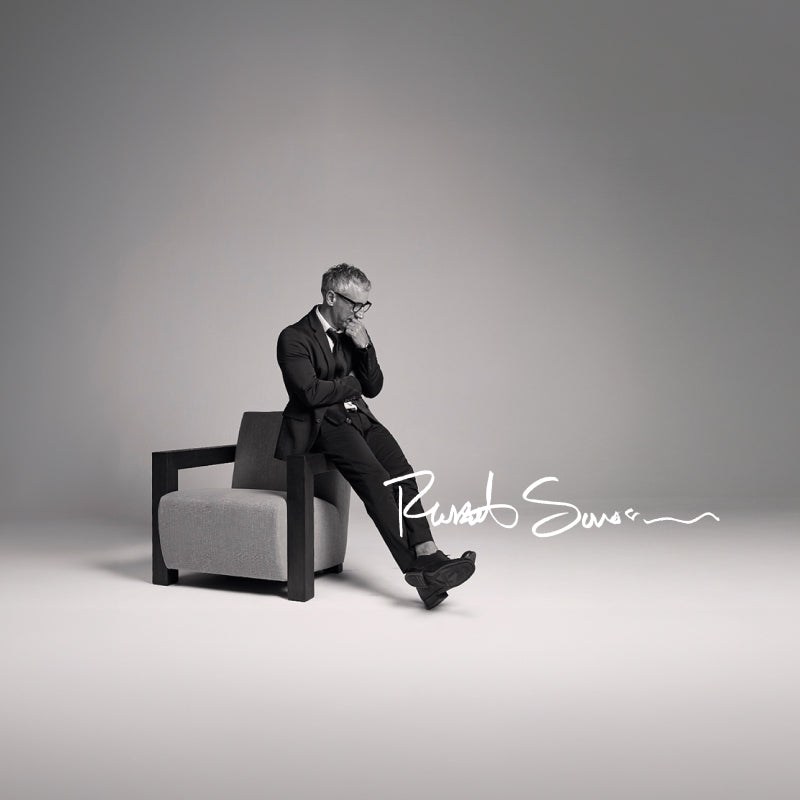
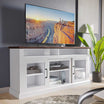
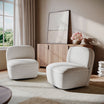
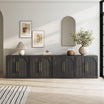
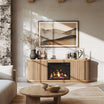


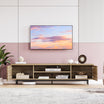



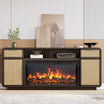
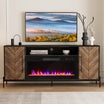
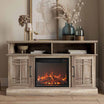
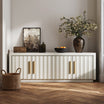
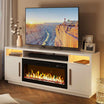
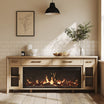



Leave a comment
This site is protected by hCaptcha and the hCaptcha Privacy Policy and Terms of Service apply.